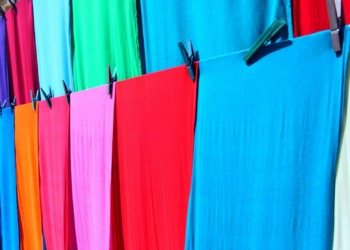The growing pressure for companies to be more sustainable has led to a surge in greenwashing, where organizations make misleading claims about their environmental credentials. On the other hand, sustainability is conceived as an expensive alternative, but in this regard, we need to understand the fact that sustainability can’t be accounted for in the usual way, it is crucial for companies and consumers to have a better understanding. But let’s take a step back!
To be 100% sustainable would mean that the product does not impact the balance of the environment and people, hence what we call net zero and social fairness. Today this notion of achieving absolute sustainability is a utopian way of approaching the problem, as in theory, we are mastering and improving things, but from a pragmatic point of view, we are seeming to fail again, and again. Some will attribute this failure to a rabbit hole from which we are trying to escape but as we dig deeper, the problem seems never-ending.
Even though it seems like the future is not bright, or “greener” there is hope. For instance, our consultancy firm, Diana Yanes Consulting, has helped clients and gathered valuable insights, enabling us to educate consumers and businesses on detecting greenwashing and implementing effective sustainable measures.
Greenwashing in shoe manufacturing
Parts of a shoe:
- Insole
- Sole
- Heel and heel cap
- Upper
- Lining
- Reinforcements and reinforcement tape
- Accessories
- Thread, glue, and nails
Let’s say the average shoe has 15 different materials in one single pair.
The phrase “Made of Recycled Plastic Bottles” 99.9% of the time refers to one single component, usually the upper, which accounts for only about 10% of the weight of the total shoe.
This misleading claim gives the impression that the entire shoe is made from recycled materials, while in reality, the environmental impact is almost irrelevant, as not all the components of the shoe follow the same reasoning.
Similarly “We offset our emissions by planting trees”… We get it, it seems like we are doing something, but for real, how many trees can we plant with all the products we are buying?
To offset all the emissions of a company by planting trees we would need many planets, though we only have one! So yes, planting trees is a good thing, but it cannot compensate for emissions generated by a company’s operations.
Another common sustainability claim is “We pay fair wages”. However, as you may understand, this means nothing. Why? Brands that are actually doing so, have a full disclosure of salaries, but most of the brands claiming for it don’t have a way to prove it and these brands should be viewed with skepticism.
RELATED ARTICLES: Greenwashing in Fashion: What to Look Out For and How to Spot It | Beware of Greenwashing in Finance | Austria Sues the EU Over Greenwashing |
Finally the statement “We have improved our shoe because we use recycled or vegan components” is too vague and lacks specifics, the question we should be asking is “by how much?”.
Simply using recycled materials or vegan components means that a product is more sustainable. Brands claiming for an improvement should measure it, and then be transparent on how many products have this “better material” compared to the total shoes that went into production.

How to improve sustainability
Overall, to improve in terms of sustainability, brands should be:
- Setting a sustainability objective
- Tracing a real plan and follow through, and
- Measuring their product’s life-cycle assessment to account for the improvement and understand where there is space to continue improving!
As consumers, we can make a difference by asking the right questions and when something doesn’t add up, research is the best follow-up action. While it may be
Some of the things we have done to be part of the change is to help brands adopt more sustainable materials and production processes, we have been building a low environmental impact library for parts, components, and materials that we constantly test in our sample lab, and thanks to a life-cycle assessment, we manage to create sustainability-scenarios to understand how the impact decreases, and where we can still do better.
Sustainability is a collective responsibility. Together we can build a better future for ourselves and the future generations to come. Even if we start small the positive impact will resonate in the future until we find definite solutions.
Editor’s Note: The opinions expressed here by the authors are their own, not those of Impakter.com — Featured Photo Credit: Diana Yates Consulting.











